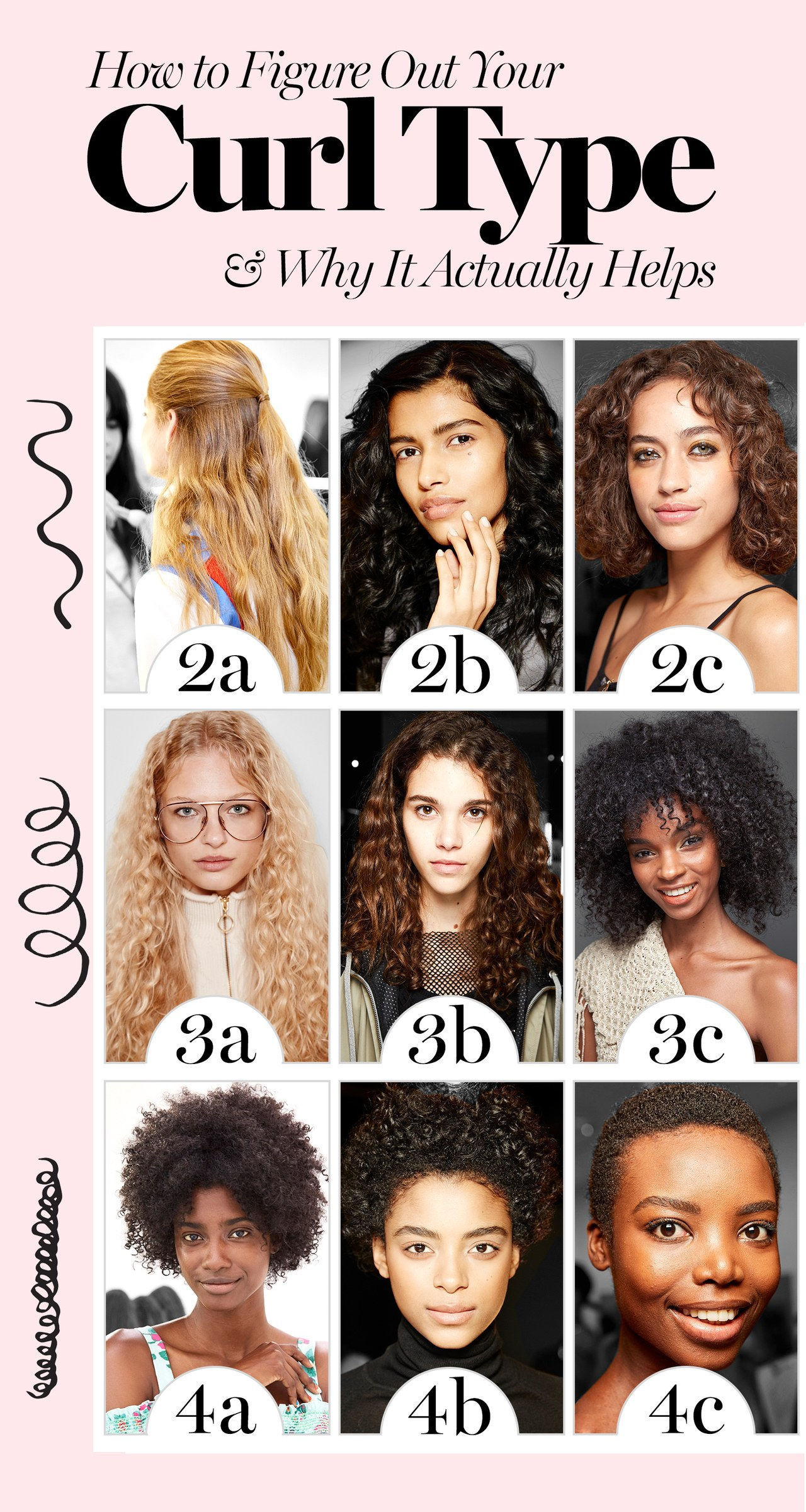How to Figure Out Your Curl Type and Why It Actually Helps

Remember when mousse was the only option for curly hair? Or the eighties? We’ve come a long way since then, thankfully, with a bountiful explosion of products for every hair type and texture. But when it comes time to face the aisle of gels, creams, gel-creams, and custards, it’s a lot. There are smoothing creams, but will that create smooth curls or leave them flat? Texturizers, but are those for handling what you have or just straight hair looking to liven up? The questions are endless. There are answers though, and hairstylists say they lie in figuring out your curl type.
While it can seem intimidating at first (what doesn’t in the curly world, #diffusers), resources like Naturally Curly have pioneered an easy, widely agreed-upon classification system. The number refers to curl families, while the letter, from “a” to “c,” points to how tightly wound your curls are within that. Curl type 1 is pretty much the absence of curl—in other words, straight. Type 2 means waves, while 3s are spiraled curls, and 4s are kinks and coils.

Why Knowing Your Type Matters
While your curl type is usually pretty clear just from looking in the mirror, listening to it makes a big difference, says hairstylist Shai Amiel (“The Curl Doctor” on Instagram). Curl types are a good blueprint for figuring out your routine, so if you have major curls, you can avoid wasting time with too-weak products. Or vice versa, if you’ve got fine waves, you can focus on the stuff that won’t weigh them down (RIP, product graveyard).
Also, because most products aren’t classified by the numerical system, knowing your type helps you home in on buzzwords when you’re wandering the hair care aisle, says celebrity curly-hair stylist Vernon Francois. “Everyone is constantly faced with what their hair texture is and how to enhance it, and this simplifies it,” he says. “Then you can investigate from there according to your needs.”
A leave-in product and a curl definer make up the standard routine, but both Amiel and Francois agree there are more factors to finding your best curl. The system thought up by the curly community works pretty well—but as with everything, the better you can know your hair, the easier it will be to pick your Goldilocks products.
What Else Plays Into Getting Your Curls Just How You Want ’Em
Porosity
OK, so “porosity” isn’t the sexiest-sounding word when it comes to talking about hair, but it is an important factor in narrowing down the products that’ll bring out your curls’ shape. The term refers to how easily your hair sucks up liquids, i.e., why your hair can take forever to dry (a question morning showerers know well). If you have no idea where you stand in the porosity scales, Francois says an easy test can clear things up. Dunk some hair in a cup of water (or take a bath, any excuse), and see if your hair floats, sinks, or stays somewhere in the middle. Boom, you know your porosity Salem witch-style.
If your hair floats, it’s nonporous and doesn’t easily absorb product, so you should reach for heavier creams that’ll fight the good fight and get the job done, like Shea Moisture’s Low Porosity Baobab & Tea Tree Oils Protein-Free Leave-In Detangler. If it sinks, your hair takes in liquids easily. Look for lighter, water-based products, Francois says. (We love his line’s PURE~FRO Moisture Spray and Ouidad’s Climate Control Heat & Humidity Gel.)
Elasticity
Maybe obviously, elasticity refers to your hair’s snap-back. Amiel suggests stretching a curl out with your fingers—if it barely coils back to where it started, that means it’s lacking elasticity and needs moisture. But he warns against reaching for oils to do the job. That sentence strikes fear right into our oil-loving hearts, but, unfortunately, he compares them to wetsuits in a bad way.
“We know that oil and water don’t mix, so you can’t apply anything oily to wet hair. If your hair is wet and you’re applying an oil-based product on it, the water will push the oil out, and it’ll sit on top of the surface,” Amiel says. “It’s like trying to shower with a wetsuit, your hair’s not getting any moisture, so it becomes dry and brittle and breaks off.” Yeah, not great. Instead, Amiel recommends water-based products like DevaCurl’s Light Defining Gel. While they may feel lighter and less powerful, you can rest easy knowing they’re sinking into your hair instead of just lying on top.
Curl Variance
So what happens if you have two curl types on your one head? Don’t stress, Francois says, because it’s super common. Most people’s curls fall somewhere between types or they’ve got multiple patterns. He suggests just using more product in the stronger-curl sections—so no, you don’t need to pick up a gel just for the section behind your ear (my personal struggle).
Related Stories:
-21 Seriously Cute Hairstyles for Curly Hair
-The Best New Products and Tools for Curly and Textured Hair
-11 Red-Carpet Hair Tips You Can Copy Without a Glam Squad

